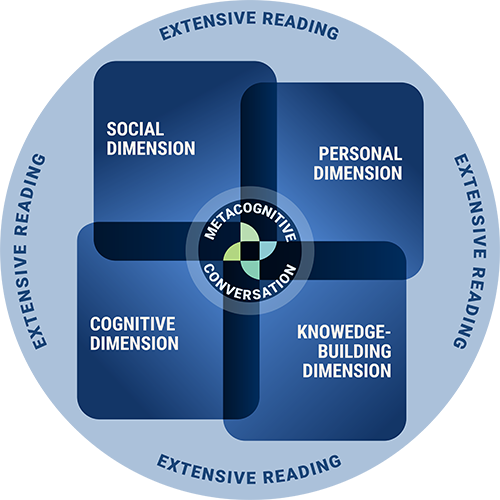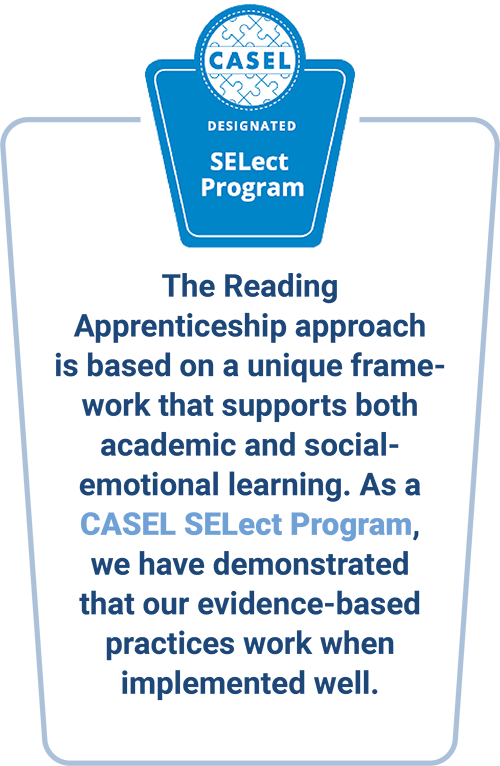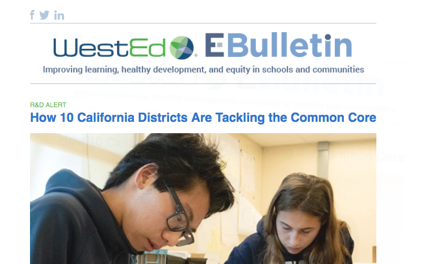Reading Apprenticeship > Our Approach
Reading Apprenticeship: Why It’s Different
Four dimensions–social, personal, cognitive, and knowledge-building–are integrated into subject-area teaching and developed through metacognitive conversation that explores students’ thinking processes. Students think and talk about how they learn as well as what they learn.
This collaborative work takes place within the context of extensive reading — increased in-class opportunities for students to practice reading in more skillful ways.

Reading Apprenticeship Impacts
The Reading Apprenticeship Framework includes four interacting dimensions – social, personal, cognitive, and knowledge-building. These four dimensions are united by metacognitive conversation that develops awareness about the reading process and encourages thinking about thinking. Metacognition makes comprehension strategies visible for students and also provides crucial support for English Learners.
Integrate Social-Emotional Learning Throughout Academic Curricula and Classroom Culture
Today’s secondary and college students need strong literacy skills, subject-area knowledge, self-direction, and curiosity to succeed. Reading Apprenticeship opens opportunities for all students, giving them new ways of reading, writing, thinking, talking, and reasoning in supportive classroom environments.
Teachers using the Reading Apprenticeship approach learn to model discipline-specific literacy skills and establish routines for discussion and collaboration that tap students’ own experiences.
Teaching students to understand their own thinking processes enables them to take control of their learning and build academic identities as problem solvers who persevere.

CASEL Designated SELect Program
The Reading Apprenticeship approach is based on a unique frame-
work that supports both academic and social-emotional learning. As a
CASE SELect Program, we have demonstrated that our evidence-based
practices work when implemented well.
Success Stories
See how Reading Apprenticeship works in a Dixon High School Honors U.S. History classroom
Reading Apprenticeship works because it is created, and continuously improved, by teachers and researchers working together to meet the needs of today’s students, standards, and learning environments.
Linda Friedrich, Director of Literacy at WestEd


